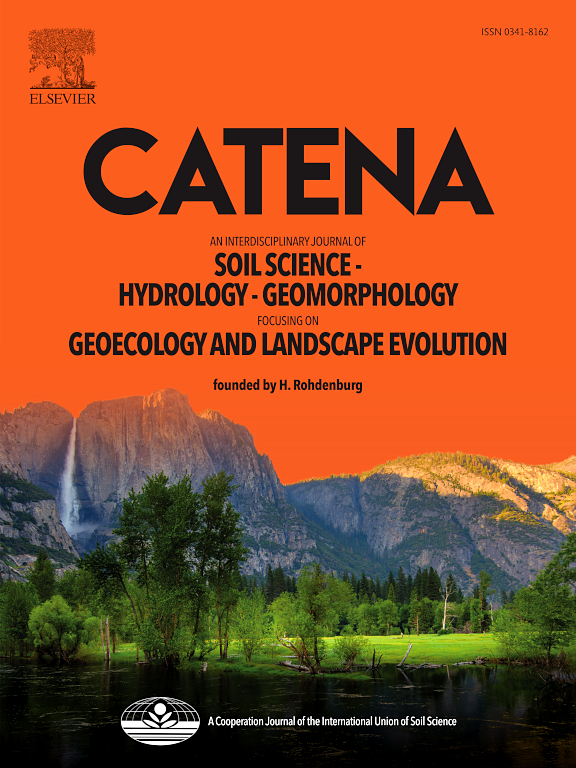Soil biogeochemical and hydraulic property response to wildfire across forested ecosystems of the Santa Catalina Mountains, Arizona, USA
IF 5.4
1区 农林科学
Q1 GEOSCIENCES, MULTIDISCIPLINARY
引用次数: 0
Abstract
Climate-driven changes in fire-activity have increased area burned and fire severity across western North America. Fire effects on vegetation, soils, and hydrology are particularly important, as they regulate post-fire recovery and ecosystem stability and function. For these reasons, improved understanding of the effects of fire on soil resources is critical to managing and conserving ecosystems. This study focused on fire effects on soil biogeochemical and hydraulic properties, including field-saturated hydraulic conductivity (Kfs) and sorptivity (S), across Madrean Pine Oak, Ponderosa Pine Evergreen Oak, and Mixed Conifer Ecological Response Units (ERU) in the Santa Catalina Mountains, Arizona, USA. The objective was to assess changes in soil properties over time after the most recent fire in the summer of 2020. Measurements were made across 35 sites one- and three-years’ post-fire in sites that experienced varying soil burn severity. Soil nutrient availability, including nitrate and ammonium and phosphorus, increased in concentration with increasing soil burn severity one year after fire, and decreased to values similar to unburned sites three years post-fire. In contrast, Kfs and S increased with soil burn severity in the Ponderosa Pine Evergreen Oak ERU, while the opposite response occurred in the Mixed Conifer and Madrean Pine Oak ERUs. Models indicated that soil water repellency was the most critical parameter controlling Kfs and S the first-year post-fire, but that its influence decreased over time. The different observed responses in soil properties across ERUs point to the need for further research relating plant species composition to post-fire soil recovery trajectories.
求助全文
约1分钟内获得全文
求助全文
来源期刊

Catena
环境科学-地球科学综合
CiteScore
10.50
自引率
9.70%
发文量
816
审稿时长
54 days
期刊介绍:
Catena publishes papers describing original field and laboratory investigations and reviews on geoecology and landscape evolution with emphasis on interdisciplinary aspects of soil science, hydrology and geomorphology. It aims to disseminate new knowledge and foster better understanding of the physical environment, of evolutionary sequences that have resulted in past and current landscapes, and of the natural processes that are likely to determine the fate of our terrestrial environment.
Papers within any one of the above topics are welcome provided they are of sufficiently wide interest and relevance.
 求助内容:
求助内容: 应助结果提醒方式:
应助结果提醒方式:


